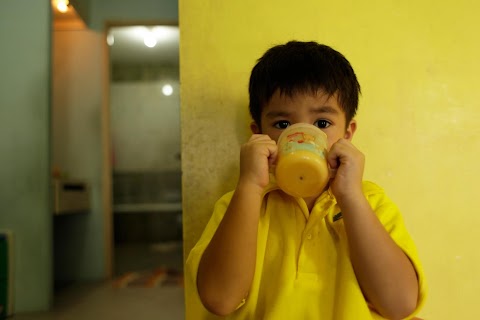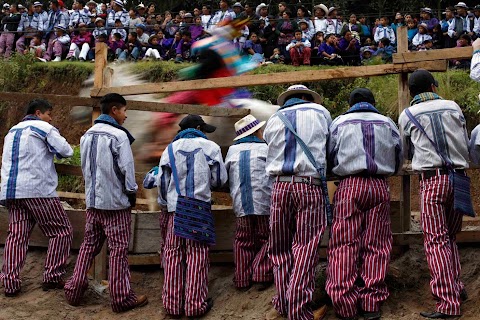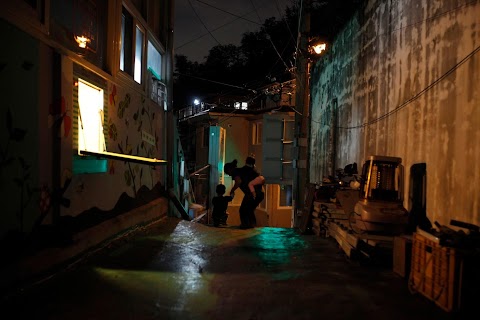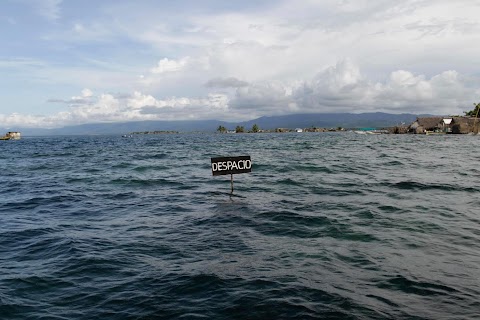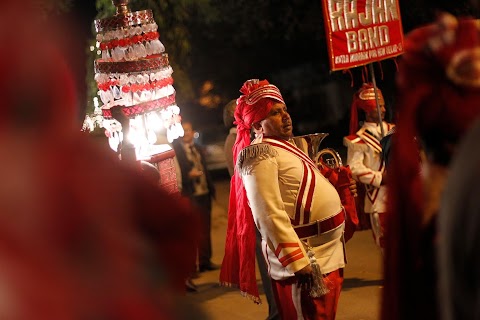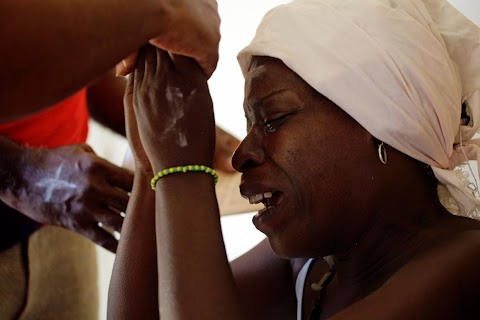
A modern witch
 Desmond Boylan
Desmond Boylan
As job titles go, Mayra must have one of the most unusual: she describes herself as a freelance spiritualist, fortuneteller and witch.
In practice, this means that she earns money offering to solve people's problems using the rituals and rites of Santeria - a religion that fuses ancient African beliefs with Catholicism.
Slideshow

Mayra blows cigar smoke as she performs a Santeria ritual. The Afro-Cuban religion was officially not allowed in Cuba after the 1959 revolution, but it was eventually tolerated and still thrives today.

When Mayra is not practicing the rituals of the religion, she is an ordinary Cuban housewife living in Havana.

She performs religious rites – like this one which involves having white crosses drawn on her feet – in her own home.

Back in housewife mode, Mayra does her chores as her husband sits beside her.

Kneeling on her sandals, Mayra carries out a religious ritual.

Mayra smokes in front of an alter. The rites she practices can involve many different elements: animals, coconuts, plants, flowers and other objects.

Mayra holds a prayer book and a cigar as she performs a ritual at home.

She is helped by her husband, who sometimes acts as her assistant, as she goes into a trance as part of a Santeria ritual.

Mayra performs a ritual on a young woman named Dayana, a Cuban model who has come to be cleansed of bad spirits through a “rompimiento” ceremony. This part of the procedure involves Mayra ripping off Dayana’s clothes.

A woman who has come to Mayra for help sits on a chair while Mayra carries out a ritual.

Mayra blows cigar smoke.

The 18-year-old model Dayana waits for the start of the ceremony Mayra was about to perform to cleanse her of bad spirits.

Mayra drinks rum as part of one of the religious rites.

The butts of cigars, coins and other objects used in Santeria lie in the corner of Mayra's home.
“Engulfed in thick cigar smoke, eyes shining, Mayra is a witch – a modern witch.”
At first sight, Mayra is a typical Cuban housewife, carrying out her daily chores. But she has another job too – one that is very different from her regular housekeeping tasks.
“I am a freelance witch, spiritualist and fortune teller,” Mayra explains. She practices the Afro-Cuban religion of Santeria, which mixes Catholicism with ancient African beliefs originally brought to Cuba by slaves.
Thousands of people practice Santeria in the Caribbean nation, but Mayra says her profession is not on the Communist Party’s list of jobs that Cubans are officially allowed to do, so she cannot apply for a licence to work legally.
Mayra’s transformation from housewife to spiritualist is dramatic. People had spoken to me about her but I didn’t believe them - I had to see for myself. I’m not particularly religious myself, but after talking to her and insisting, she invited me to a ceremony in which her husband acted as her assistant.
Engulfed in thick cigar smoke, eyes shining, Mayra is a witch – a modern witch. She falls into a trance and shakes, talks about the dead, the spirits, the future, the past, the need for ceremonies, and practices sophisticated rituals involving animals, coconuts, plants, flowers and an array of other objects.
There was a regular trail of different clients seeking help from Mayra, usually middle-aged men and women. I could hear chanting and cries from outside the “chamber,” the room in the house where the ceremonies are practiced. My curiosity kept growing.
One woman came who was troubled by a family affair, and she sought assistance and advice from Mayra. This woman didn’t mind having some pictures taken. Usually people involved in Santeria are very camera shy and do not allow their rites to be documented, so I feel privileged to have gained access.
One day I was at Mayra’s place and Dayana, an 18-year-old Cuban model, showed up. Dayana was having some troubles at home so her mother decided to take her along to cleanse her of bad spirits, something known as a “rompimiento” ceremony.
The ritual consists of rites and prayers involving coconuts, cigar smoke, alcohol, scents and other artefacts. The person must have his or her clothes ripped off as part of the process to expel bad spirits.
The momentum of the ceremony kept growing, Mayra was smoking cigars, the room was full of smoke, and there was a strong smell of different scents as Mayra seemed to fall into a trance. At one point, in her dazed state, she had to be held up by her husband. She asked Dayana to follow her to the back of the house near her shrine, and started ripping off her clothes frantically while speaking in an African language.
Several days later Mayra went to the seaside to finish the work she had begun for Dayana. There on a beach she performed a simple ceremony beside the water, reciting phrases in an African language while pouring a liquid from a jar into the sea.
After a few days I asked Mayra how her client Dayana was doing. She said she had received the news that Dayana’s troubles had ended and that she was on a tour of Cuba working as a model and doing very well.
Mayra charges 240 Cuban pesos, around ten dollars, for a full ceremony and around 100 pesos for consultations.
But she says, “I (often) don’t charge anything if the person needs my help and does not have money. Too many people involved in Santeria are just in it for the money and have made it a prosperous business.”
(Writing by Desmond Boylan; Editing by Hannah Vinter)



